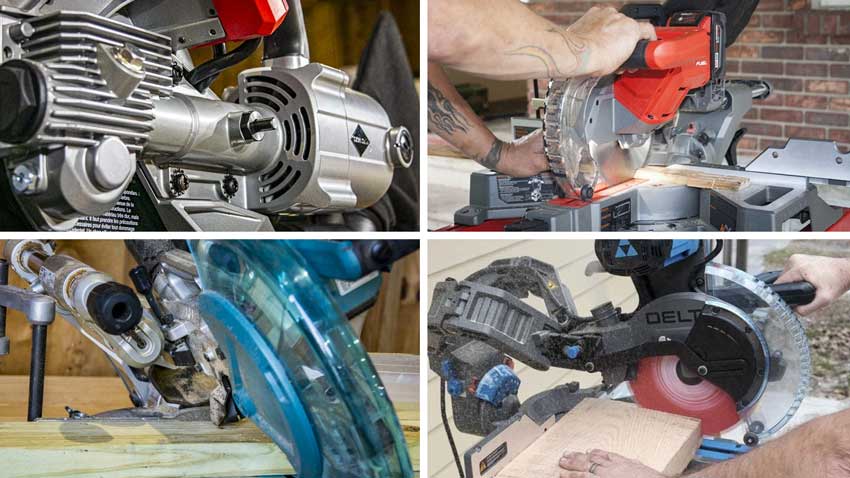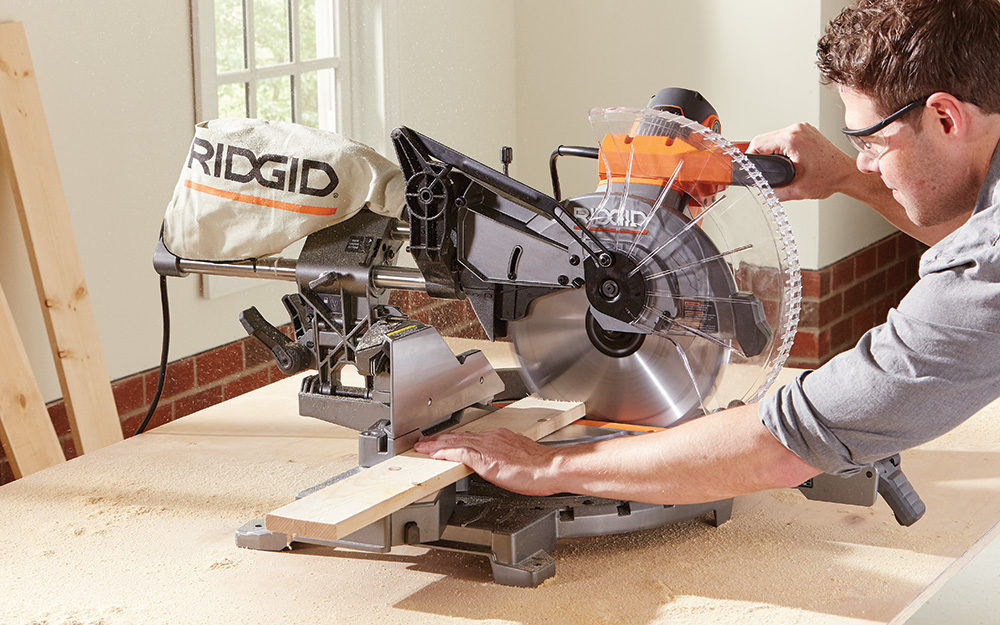Are you wondering what miter saw you need for your next woodworking project? Well, you’ve come to the right place! Let’s dive into the world of miter saws and find the perfect one for you.
Now, you might be asking yourself, “What is a miter saw?” A miter saw is a versatile power tool that allows you to make accurate and precise crosscuts, bevel cuts, and miter cuts in various materials like wood, plastic, and even metal.
But with so many different types and models out there, choosing the right miter saw can be a bit overwhelming. Don’t worry, though! We’ve got you covered. In this article, we’ll explore the different types of miter saws and help you figure out which one best suits your needs.
So, grab your safety goggles and let’s get started on this exciting journey to find the perfect miter saw for your woodworking adventures!

What Miter Saw Do I Need? A Comprehensive Guide for Woodworking Enthusiasts
Woodworking is a popular hobby and profession that requires precision and accuracy. One essential tool for any woodworker is a miter saw. But with various types and features available, it can be overwhelming to choose the right one for your specific needs. In this article, we will provide a comprehensive guide to help you determine the miter saw that best suits your woodworking projects.
The Basics of Miter Saws
A miter saw is a power tool used to make precise crosscuts and miters in wood and other materials. It consists of a circular saw blade mounted on a pivoting arm, which can be angled left or right to make bevel cuts. Miter saws are commonly used in woodworking, framing, and trim carpentry.
There are three main types of miter saws: basic compound miter saws, sliding compound miter saws, and dual compound sliding miter saws. Each type offers different features and capabilities, so it’s important to understand them before making a purchase.
Basic compound miter saws are the most affordable option and allow for miter cuts and bevel cuts in one direction. Sliding compound miter saws have a sliding arm that allows for wider cuts and are ideal for cutting larger boards. Dual compound sliding miter saws can tilt in both directions, making them suitable for complex angled cuts.
Factors to Consider
When deciding which miter saw you need, there are several factors to consider:
1. Project Requirements: Consider the type and size of woodworking projects you frequently work on. If you primarily work on smaller projects, a basic compound miter saw may be suitable. However, if you tackle larger projects or need to cut wide boards, a sliding compound or dual compound sliding miter saw would be more appropriate.
2. Accuracy: Look for a miter saw with precise angle adjustments and a laser guide. These features can ensure accurate and consistent cuts, especially when working with intricate designs or angles.
3. Power and Blade Size: Consider the power and blade size required for your projects. Larger blades provide the ability to cut thicker materials, while higher-powered motors ensure smoother and faster cuts. Consider the material thickness you work with most frequently and choose a miter saw that can handle it.
4. Portability: If you frequently move your miter saw between job sites or have limited space in your workshop, consider a lightweight and portable option. Sliding compound miter saws tend to be heavier, so keep that in mind when deciding on portability.
5. Budget: Set a budget for your miter saw purchase and prioritize the features that are most important to you. While it’s tempting to opt for the most advanced model, it’s essential to find a balance between features and your budget.
The Different Types of Miter Saws
Basic Compound Miter Saws
Basic compound miter saws are the most common type and are suitable for DIYers and hobbyists. They allow for miter cuts and bevel cuts in one direction, making them versatile for a range of woodworking projects. These saws are typically lightweight and portable, making them an excellent choice for those with limited workshop space or who need to transport their tools frequently. While they may lack some of the advanced features of other types of miter saws, they are an affordable option for beginners or those on a budget.
Sliding Compound Miter Saws
Sliding compound miter saws have a sliding arm that allows for wider cuts, making them ideal for cutting larger boards or working with wider materials. The sliding feature enables the blade to move forward and backward, increasing the cutting capacity and versatility of the saw. These saws are suitable for professionals and those who often work on larger projects. However, they tend to be heavier and more expensive than basic compound miter saws.
Dual Compound Sliding Miter Saws
Dual compound sliding miter saws provide the most versatility and accuracy when it comes to making angled cuts. Contrary to basic compound and sliding compound miter saws, dual compound sliding miter saws can tilt in both directions, allowing for bevel cuts in both left and right directions. These saws are popular among professional woodworkers who frequently work with complex angles and designs. While they are the most expensive option, they offer the highest level of precision and capabilities.
Choosing the Right Miter Saw
Now that you understand the basics of miter saws and the different types available, it’s time to choose the right one for your needs. Consider your project requirements, desired level of accuracy, power and blade size, portability needs, and budget. Weigh the pros and cons of each type of miter saw and prioritize the features most important to you. Remember, the right miter saw will depend on your specific woodworking projects and preferences. With the right tool in hand, you’ll be ready to take on any woodworking task with confidence and precision. Happy woodworking!
Key Takeaways: What Miter Saw Do I Need?
- Consider the type of projects you’ll be working on – a compound miter saw is great for basic woodworking, while a sliding compound miter saw is better for larger projects and wider boards.
- Think about the size and portability – if you have limited space or need to move the saw around, a compact and lightweight miter saw might be ideal.
- Check the cutting capacity – the bigger the blade size and cutting capacity, the larger the boards you can work with.
- Look for key features like laser guides and bevel adjustment for accuracy and versatility in cutting angles.
- Consider your budget – there are miter saws available in different price ranges, so choose one that fits your needs and budget.
Frequently Asked Questions
Welcome to our FAQ section on finding the right miter saw for your needs. Whether you’re a DIY enthusiast or a professional, we’ve got the answers to help you choose the perfect miter saw for your projects.
1. What factors should I consider when choosing a miter saw?
When selecting a miter saw, it’s important to consider the type of projects you’ll be working on and the materials you’ll be cutting. The size of the saw’s blade, its cutting capacity, and the available angles and bevels are also crucial factors to keep in mind. Additionally, think about whether you need a corded or cordless saw, and consider your budget as well.
Ultimately, finding the right miter saw involves finding a balance between your specific needs, the features offered by different saws, and your budget limitations.
2. What are the different types of miter saws available?
There are three main types of miter saws: standard miter saws, compound miter saws, and sliding compound miter saws. Standard miter saws offer basic cutting in a horizontal or vertical position. Compound miter saws have the ability to tilt the blade in one direction, allowing angled cuts. Sliding compound miter saws can tilt the blade and also slide it forward and backward, providing greater cutting capacity.
The type of miter saw you need depends on the complexity of your projects and the range of cuts you plan to make.
3. What size blade should I choose for my miter saw?
The size of the blade you choose for your miter saw depends on the type of projects you’ll be working on. Common blade sizes for miter saws range from 8 to 12 inches. Smaller blades are ideal for trim work and smaller projects, while larger blades offer greater cutting capacity for thicker or wider materials. It’s important to ensure your chosen miter saw can accommodate the blade size you select.
Consider the range of materials you’ll be cutting and the size of the cuts you’ll be making to determine the appropriate blade size for your miter saw.
4. Should I choose a corded or cordless miter saw?
The decision between a corded or cordless miter saw depends on your mobility needs and the availability of power sources. Corded miter saws offer consistent power and unlimited run time, while cordless saws provide greater portability and versatility. If you’ll be working in a fixed location with access to power outlets, a corded saw may be more suitable. On the other hand, if you need to move around or work in areas without power sources, a cordless saw would be a better choice.
Consider your specific projects and the environment in which you’ll be working to determine whether a corded or cordless miter saw is the right option for you.
5. What is the average price range for miter saws?
The price range for miter saws can vary depending on the brand, features, and quality of the saw. Entry-level miter saws typically range from $100 to $300, while mid-range options can be found between $300 and $500. Higher-end professional-grade miter saws can cost anywhere from $500 to $1000 or more. Remember, investing in a high-quality miter saw can lead to more accurate and efficient cutting, so consider your budget and the level of precision you require.
It’s important to find the right balance between price and features to ensure that the miter saw you choose meets your needs without breaking the bank.

Should You Buy A Miter Saw? – Beginner Woodworker’s guide
Summary
Deciding on the right miter saw for your needs can be challenging, but it’s important to consider the type of work you’ll be doing and your budget. If you’re a beginner or doing simple DIY projects, a basic compound miter saw should be sufficient. However, if you’re a professional or tackling more complex tasks, investing in a sliding compound miter saw with advanced features is recommended. Remember to prioritize safety by using appropriate safety gear and following the manufacturer’s instructions.
Ultimately, the key is to find a miter saw that suits your specific needs, whether it’s for small projects or professional carpentry work. Taking the time to research, compare different models, and consider your budget will help you make an informed decision. With the right miter saw, you’ll be ready to take on any cutting task with confidence.
